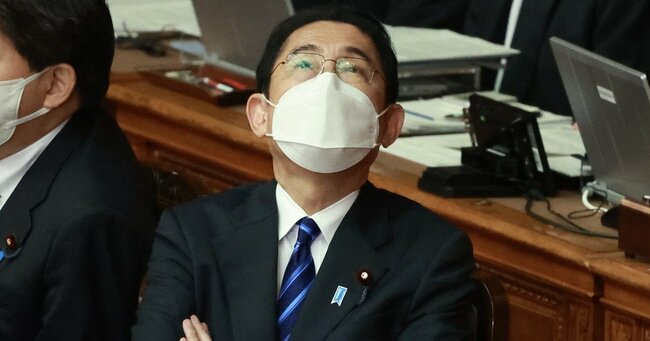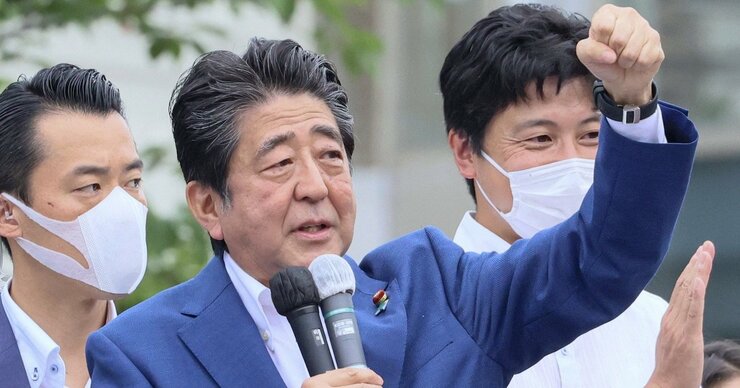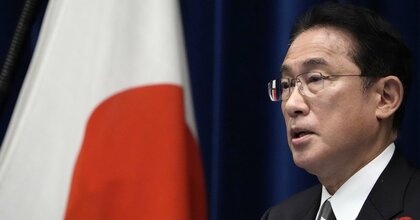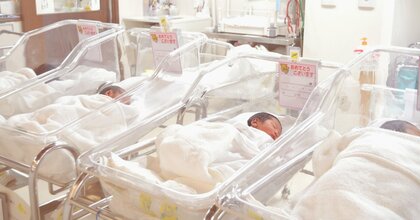Originally published in Japanese on Nov. 25, 2022
‘Messed up’
“It’s all messed up,” signed a key member of the Kochikai, the fourth-largest intraparty faction in the ruling Liberal Democratic Party (LDP). The faction is led by Prime Minister Fumio Kishida.
“We must support the Kishida administration by taking responsibility for our words and actions, and by working together with a high sense of urgency and unity,” said Takumi Nemoto, the faction secretary general, at the faction’s Nov. 10 meeting. The Kochikai is a distinguished faction within the LDP, but prior to Kishida, it had not produced a prime minister in roughly 30 years. It is now enveloped by a sense of crisis.
It is little wonder: Kishida’s approval rating, which was quite high at the start of the year, has plummeted, and instability has rocked the administration.
A nationwide poll conducted by the Yomiuri Shimbun from Nov. 4 to Nov. 6 showed the approval rating at 36%, the lowest since the cabinet was formed and down from 45% in the previous October survey. It is the first time the support rate has fallen into the 30% range, a traditional danger zone for Japanese administrations. Kishida’s disapproval rate rose four percentage points to 50%. A survey by the Asahi Shimbun showed the approval rate at 37% (down from 40%) and disapproval at 51% (up from 50%). A joint poll by the Sankei Shimbun and Fuji News Network from Nov. 12 to Nov. 13 found approval at 38.6% and disapproval at 57.2%.
Kishida has told those around him that “we have to endure for now,” but the headwinds facing his administration are unlikely to dissipate easily.
On Oct. 28, the cabinet approved a major economic stimulus package focused on addressing the weak yen and soaring prices. “We will accumulate results one by one while listening to the voice of the people, do our utmost for the future of this country and restore public trust,” Kishida said. However, a poll by FNN and other media found that 76% of respondents did not have a positive opinion of the government’s response to rising prices. The reality is that Kishida’s approval has been consistently dragged down by the perception that he is detached from the public.
Why has Kishida found himself in such rough waters? His political woes in large part, stem from the fact that two key positions are vacant.
Increasingly isolated
Kishida faces a major problem in that he does not have a right-hand man.
Former Prime Minister Shinzo Abe, who was in power for almost eight years from 2012, had an extremely capable number two in Chief Cabinet Secretary Yoshihide Suga. Suga was close to the central government ministries and agencies, and he had a knack for behind-the-scenes work. Long-lived administrations in recent history have typically been supported by similar figures who were inseparable from the administration: Masaharu Gotoda in the cabinet of Yasuhiro Nakasone and Yasuo Fukuda in the cabinet of Junichiro Koizumi, for example.
There is no one similar to Kishida. Chief Cabinet Secretary Hirokazu Matsuno, who was appointed to his position as a member of the Seiwa Policy Research Council, also known as the Abe faction and the largest intraparty faction, is known as a policy expert, including in the administration of education and science. However, his mild personality has been a disaster. “He has no energy or drive to go all out in protecting the prime minister,” said a younger member of the LDP.
Perhaps sensing this atmosphere, when the prime minister reshuffled his cabinet and appointed new LDP executives in August, Koichi Hagiuda, head of the party’s Policy Research Council, was the “representative of the Abe faction” and was asked about his input on personnel decisions. There are no indications that Kishida spoke with Matsuno. It is no surprise that the number two figure in the administration feels he has lost his role as right-hand man.
“The prime minister and the chief cabinet secretary do not get along very well,” said a central figure in the LDP. “Prime Minister Kishida’s ‘power to listen’ does not apply to Matsuno’s advice.”
Former Prime Minister Suga, who delivered a personal eulogy for Abe at his state funeral, reflected on his time in the Abe administration during a September television program: “The style of the second Abe administration (2012 to 2020) was that the prime minister would decide on the overall picture, and the chief cabinet secretary would coordinate each issue later.”
In the case of the Kishida administration, while advice is sent to the Prime Minister’s Office from the chief cabinet secretary and other figures, the prime minister listens in fewer and fewer cases. This may be because Kishida feels those around him are incompetent, but some are now saying that the prime minister has become a “naked emperor.”
Widening rift
A political reporter from one of Japan’s major newspapers explains:
“I first thought, ‘huh?’ about Abe’s state funeral. Some of the behind-the-scenes work between the Prime Minister’s Office and the LDP was delayed from the prime minister’s side, and that affected relations with the opposition parties. That was because communication and the division of roles between the Prime Minister's Office and the party were not clear, and they did not go smoothly. For this kind of thing, they should have approached the opposition parties privately to get a feel for the event. Seeing how they’ve lost the initiative recently, I can’t help but feel like the Prime Minister’s Office has already collapsed.”
Seiji Kihara, another figure in the Prime Minister’s Office and a member of Kishida’s LDP faction, was previously thought to be the premier’s chief aide. However, he has been criticized as elitist and pompous, and he does not enjoy the trust of party officials in the LDP or bureaucrats in Kasumigaseki, the center of Japan’s civil service. It is no exaggeration to say that the only person Kishida trusts in the Prime Minister’s Office is his own son, Shotaro.
Kishida replaced cabinet ministers Daishiro Yamagiwa, who oversaw economic revitalization, and Yasuhiro Hanashi, the previous justice minister, for verbal gaffes, but the decision further highlighted the rift between the prime minister and the Prime Minister’s Office on the one hand, and the LDP on the other.
From early on, there were calls within both the Prime Minister’s Office and the LDP to make a quick decision about whether to replace the ministers. There were concerns that the party and the prime minister would suffer while the Diet was in session, giving the opposition ample opportunities to criticize the ministers. However, Kishida repeatedly said in the Diet and elsewhere that he had no intention of replacing Hanashi. Hanashi then resigned on Nov. 11. Just before that Kishida had told the LDP executive committee that he did not intend to oust Hanashi.
This naturally led the members of the executive committee, which oversees the party, to believe that Kishida does not share his true intentions with them. It was as though the prime minister was spurning his own supporters. A survey conducted by FNN and other media found that more than 70% of respondents thought that Hanashi, who made remarks widely viewed as making light of his role in authorizing the death penalty, should resign, but the tardiness of Kishida’s decision means the public is unlikely to be satisfied.
Abe’s absence
The prime minister’s faction in the LDP is only the fourth largest, meaning his administration is prone to instability.
That said, Suga, who ascended to the premiership, lacked a faction entirely. Suga, who became prime minister after Abe's abrupt resignation, chose to resign in a little over a year, shortly before the term of the lower house ended. However, he achieved significant results in a short period of time. He cut mobile phone rates, ramped up Japan’s COVID-19 vaccination program, provided insurance coverage for fertility treatments, and created the Digital Agency.
Abe was Suga's biggest supporter, and the loss of Abe, whom Kishida also relied on as a sounding board, will be significant. The LDP executive committee includes Vice-President Taro Aso and Secretary-General Toshimitsu Motegi, but now that the “weight” of Abe has been removed, there is no one who can suppress dissent from within the party.
“The password is ‘perseverance.’” As one member of Kishida's faction noted, even the recently passed economic stimulus package, which includes measures to reduce the burden of rising prices on Japanese households, has been a political dud. There is little chance of a comeback plan that would help the administration stay afloat.
A right-hand man to defend the government at all costs, and the now missing “breakwater” of Abe… Without these key positions filled, are there any moves left to Kishida?
“If things continue like this, the administration will continue to weaken,” said a former LDP cabinet minister who is close to Kishida. “It’s important that he first get through the local elections next spring, but he needs to consider more fully reshuffling the cabinet and LDP leadership to change the heavy atmosphere. He shouldn’t rule out the possibility of pulling out that last trump card.”
Next May, the Group of 7 leaders’ summit will be held in Hiroshima, Kishida’s home turf. How does the prime minister view the issues that are piling up both at home and abroad, and what course of action is he considering? Pressure is bearing down on the Kishida administration, and the countdown to its departure has already begun.
(Originally written in Japanese by Kenichi Ogura, translated and edited by Connor Cislo)











